Trust Coastal Property Restoration For Rapid Relief And Peace Of Mind
Swift Water Damage Cleanup and Restoration
Water Damage Restoration in Isle of Palms, SC
- Dealing with a devastating water-related event in your home or business is a truly traumatic experience. What starts as a small leak can quickly escalate into a situation where your property is flooded with water. Your most cherished belongings and important business documents are ruined. You're left with a catastrophe on your hands, and with every minute that passes, things seem to get worse. Within 24 hours, the most important people in your life are now at risk because of compromised water containing harmful bacteria and allergens.
- If you've never experienced the effects of water damage, be thankful. But those who have had to endure such an unwelcome experience know first-hand how important it is to get the water cleaned up ASAP. That's where Coastal Property Restoration swoops in to save the day. From roof leaks and busted pipes to sump pump malfunctions and natural disasters, Coastal Property Restoration provides water damage clean-up in Isle of Palms, SC, when you need professional service and peace of mind most.
Service Areas
A Water Damage Restoration Company You Can Trust
At Coastal Property Restoration, our water damage mitigation company is always prepared to respond quickly to water damage emergencies. That's because we truly care about our customers and never subject them to half-measures or mediocre work. At the end of the day, we're passionate about restoring the lives of home and business owners who are devastated, confused, and looking for trustworthy water damage restoration.
To help achieve that goal, we use years of expertise and modern, state-of-the-art equipment to remove moisture and standing water from your property. In doing so, we can help protect your family or staff while restoring your quality of life. But you've got to act fast - damage from water in your home or business can spread quickly and just affect every aspect of your property, from its roof to its foundation.
So, if you're trying to put the pieces back together after a water loss, it's time to contact Coastal Properties LLC. With one call, our team of experts will arrive at your home or business to remediate your water damage in Isle of Palms, SC, using advanced tools, superior drying techniques, and detailed documentation. We aim to restore your property to its pre-loss condition so you can return to living a normal life again.
The Coastal Property Restoration Process
Our team of licensed and insured water damage clean-up professionals uses a streamlined process to address your needs ASAP:
- Assess: We assess the extent of your water damage by conducting a thorough inspection.
- Mitigate: Our technicians get to work quickly to mitigate and prevent further damage to your home, business, and belongings.
- Recover: Our water damage restoration experts help you recover from your water emergency with a focus on restoring your property to its pre-loss condition.
Dealing with an emergency that needs to be addressed sooner than later? With 24-hour service, we're here for you day and night, no matter how severe your water damage issue may be.
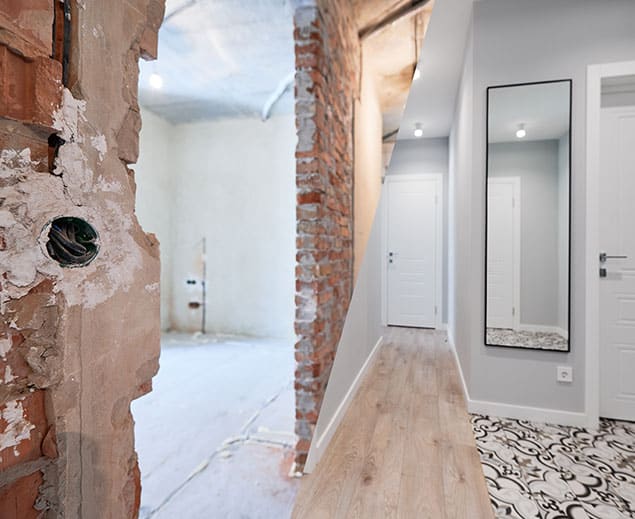
What Causes Water Damage Your Home?
Water is undoubtedly essential for our planet, but it can also be incredibly destructive. Among all the potential disasters that could harm your property, water damage ranks high. It has a tendency to sneak into small, unnoticed areas where it can cause warping and discoloration, whether it's from a severe thunderstorm or a tiny leak. Even a small amount of water can be deceptively expensive, costing thousands of dollars if not addressed immediately.
The most concerning part is that it can happen in an instant, catching you and your family off guard. However, by keeping these common causes of water damage in mind, you can take steps to prevent water from causing damage to your property.
Unsure what might be causing water to enter your home in South Carolina? Call Coastal Property Restoration as soon as you can so our team can come to your property and conduct an inspection.
Get a Quote
In the United States, South Carolina is among the top five states with the greatest number of hurricanes, with a total of 30 making landfall. This accounts for 10.10% of all the hurricanes in the country. While five of those hurricanes were classified as being major (Category 3), smaller hurricanes and even minor rain showers can result in significant water damage clean-up in Isle of Palms, SC.
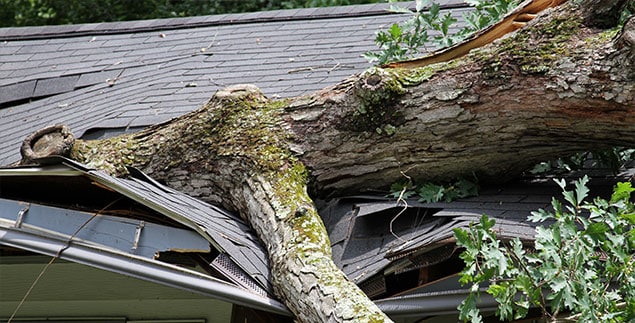
Properly functioning gutters are essential for directing water away from your home, especially during fall leaf season when clogs are common. However, when gutters do become clogged, rainwater can accumulate and flow over the edges, causing potential leaks into your attic, walls, or basement. It's important to ensure your gutters are free of debris to prevent any water damage to your home.

Water heaters that are old or not properly installed have a tendency to develop leaks. Sadly, these leaks can be quite severe and result in the accumulation of several inches of water in your basement or crawlspace.

Pipe leaks may start small, but they can have devastating consequences. Whether it's loose-fitting pipes under your kitchen sink or old drainage systems under your home, water from a leak can cause serious damage to your property. Not only can it ruin prized possessions and warp wallpaper, but it can also create conditions for mold growth, even with just a small amount of moisture present. It's crucial to address any leaks as soon as possible to prevent further damage.
Some other common causes of water damage in residential homes include the following:
- Overflows (sinks, bathtubs, toilets)
- Sprinkler Systems (accidents & malfunctions)
- Clogged Drains (hair, grease, dirt, etc.)
- Washing Machines (compromised PVC supply line)
- AC Condensation (clogged condensate line, damaged drain pan)
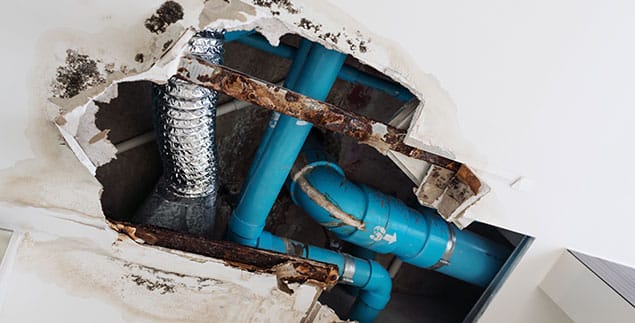
Water Damage in Isle of Palms, SC: Restoration vs. Mitigation vs. Remediation
As a reputable water damage restoration company in South Carolina, we get questions all the time from misinformed customers asking what the differences are between restoration, mitigation, and remediation. We get it - to the untrained individual, they all sound about the same. But each serves a special purpose in the process of eliminating water from your home or office.

Water Damage Mitigation
You can think of water mitigation as an emergency response meant to stop and contain water so that it doesn't cause any more damage to your property. Often, mitigation includes an inspection of the damaged area and an advanced water extraction process to ensure a hazard-free workplace.
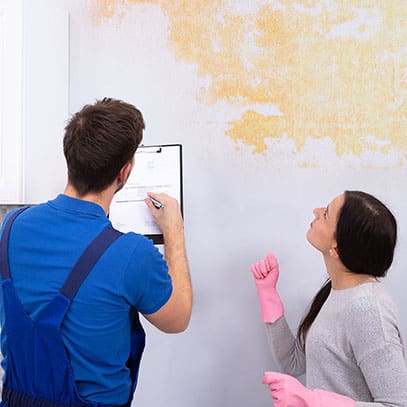

Water Damage Remediation
This stage often involves a detailed clean-up and removal of residual water from the property. Water damage techs will also remove furniture and other items affected by the water damage and dispose of any contaminated materials. During this phase, blowers and pumps may be used to dry areas of the property. Sometimes, boards or tarps are used to protect the property as needed. From there, a final cleaning usually takes place that can include deodorizing and sanitizing items that can be salvaged from water damage. It should be noted that sometimes water mitigation and remediation overlap. For instance, remediating a contaminant from an area of your home might involve mitigating damage to something like a pipe that has burst.
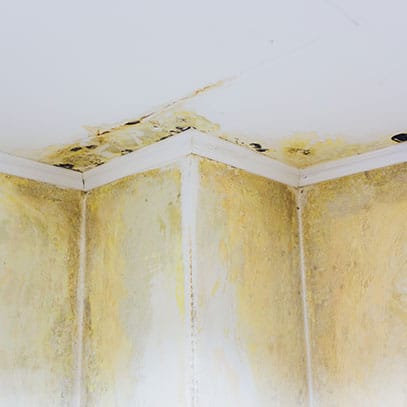

Water Damage Restoration
In this final stage, water damage restoration professionals help ensure that moisture levels in the impacted areas are back to normal. They take care of replacing the damaged drywall, repairing the floors that have buckled, and fixing the ceilings affected by water. Additionally, they clean and restore the items that are still in good condition. All of these measures are taken to bring your property back to its original state before the damage occurred. Think of it like this: Water remediation focuses on completing temporary tasks, while restoration centers around more permanent solutions.
While the water damage clean-up steps listed above might sound interchangeable, each addresses a crucial step in the remediation process. If you're working with a water damage restoration company and they tell you otherwise, know that they're perpetrating a myth. Speaking of myths, here are a few of the most common ones that we have run across in our time as water restoration experts.
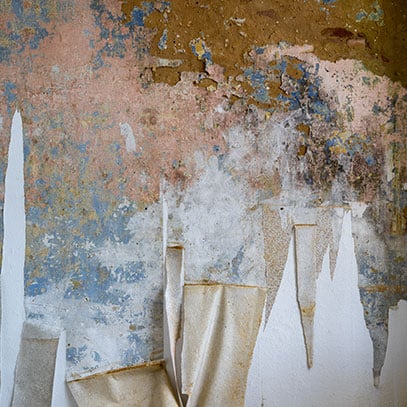
You can think of water mitigation as an emergency response meant to stop and contain water so that it doesn't cause any more damage to your property. Often, mitigation includes an inspection of the damaged area and an advanced water extraction process to ensure a hazard-free workplace.
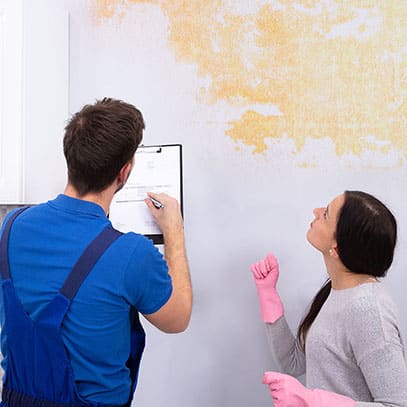
 Call Now
Call Now
This stage often involves a detailed clean-up and removal of residual water from the property. Water damage techs will also remove furniture and other items affected by the water damage and dispose of any contaminated materials. During this phase, blowers and pumps may be used to dry areas of the property. Sometimes, boards or tarps are used to protect the property as needed. From there, a final cleaning usually takes place that can include deodorizing and sanitizing items that can be salvaged from water damage. It should be noted that sometimes water mitigation and remediation overlap. For instance, remediating a contaminant from an area of your home might involve mitigating damage to something like a pipe that has burst.
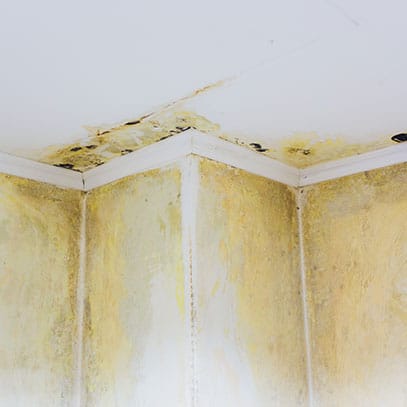
 Call Now
Call Now
In this final stage, water damage restoration professionals help ensure that moisture levels in the impacted areas are back to normal. They take care of replacing the damaged drywall, repairing the floors that have buckled, and fixing the ceilings affected by water. Additionally, they clean and restore the items that are still in good condition. All of these measures are taken to bring your property back to its original state before the damage occurred. Think of it like this: Water remediation focuses on completing temporary tasks, while restoration centers around more permanent solutions.
While the water damage clean-up steps listed above might sound interchangeable, each addresses a crucial step in the remediation process. If you're working with a water damage restoration company and they tell you otherwise, know that they're perpetrating a myth. Speaking of myths, here are a few of the most common ones that we have run across in our time as water restoration experts.
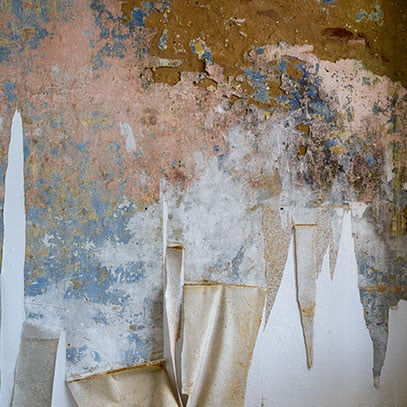
 Call Now
Call Now
Myths About Water Damage Restoration in Isle of Palms, SC
When it comes to water damage restoration, there's a lot of information out there that can be misleading or downright incorrect. This can be especially frustrating for property owners who are caught off guard by unexpected leaks or floods. To make matters worse, there are several common myths about water damage that can actually make the problem worse if you're not aware of them. To help clear things up, we've debunked three of these myths below.
It's important to remember that water damage can often go undetected. Water has a sneaky way of hiding in all sorts of nooks and crannies throughout your home, including behind walls, in carpets, under floors, and in ceilings. The problem with these materials is that they're porous, which means they not only hide water, but they also absorb it. Even if it appears that everything has dried out, the moisture that's lurking beneath the surface can still cause serious damage over time.
That's why it's crucial to take action and not let water dry on its own. If left untreated, it won't simply evaporate; it will be absorbed. Fortunately, the expert technicians at Coastal Property Restoration are equipped with top-of-the-line equipment to help locate and eliminate any hidden moisture or trapped water. You can trust us to thoroughly dry out your home and protect it from any further damage.
Dealing with water damage restoration and preventing further damage requires swift action, as time is of the essence. The longer water remains, the more extensive the damage becomes. The response window is narrow, less than 24 hours, and within this timeframe, mold growth may occur, creating an entirely new set of issues. Plus, salvaging materials in your home after prolonged exposure to water is challenging, so the best course of action is to respond immediately to water damage.
We understand that this can be challenging, but working with a reputable water damage cleanup service like Coastal Property Restoration can make all the difference. Our team can respond promptly and efficiently, allowing you to focus on your life while we take care of your home. The bottom line? If you've got water in your home or business, don't waste any time. Call a trusted water damage restoration company ASAP to minimize losses, mitigate damage, and prevent the risk of mold.
The saying, "Everything heals with time," is not a phrase that applies to mold in your home or business. As mentioned above, it's important to act quickly when dealing with water damage, as mold can begin to grow in as little as 24 hours. The musty odor that comes with mold won't stay contained to the affected area; it will eventually spread throughout your entire home.
It's crucial to take the necessary steps to stop mold growth and spread, including proper water extraction, drying, dehumidification, and sanitization. Additionally, any saturated materials, such as couches, carpets, floors, and drywall, must be treated properly to eliminate the musty smell. To ensure your home is fully restored and smelling fresh after water damage, it's best to have a professional clean-up crew go through each step of the process to guarantee no moisture is left behind.
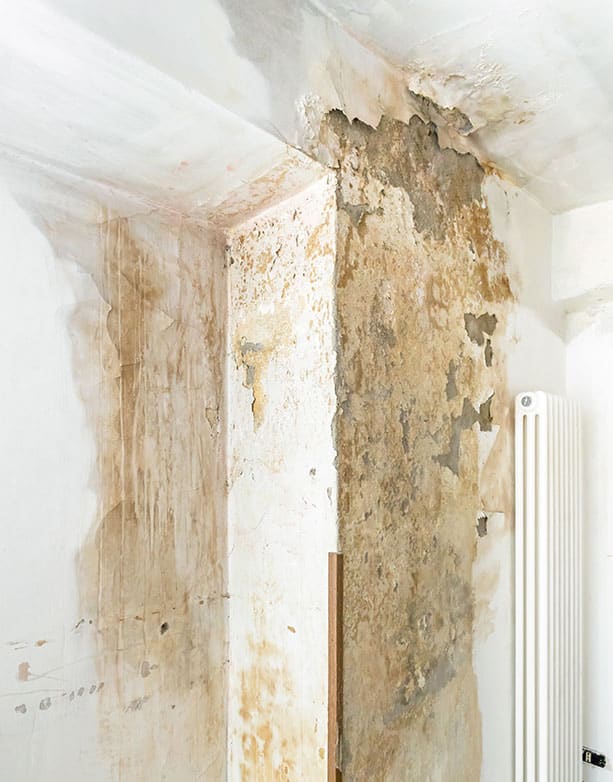
Getting Back to Business: Common Signs of Commercial Water Damage in Isle of Palms, SC
Water damage can be a major setback for any commercial property and business, causing loss of revenue and productivity. But fear not; Coastal Property Restoration has got your back with skilled technicians and reliable water damage restoration services. As a savvy business owner, however, it's important for you to stay vigilant and look out for early signs of water damage to your property so you can take action before it becomes a major problem.
Inspect Your Piping
It's important to thoroughly inspect the piping both inside and outside the building. Pay close attention to any signs of oxidation or corrosion around pipe fixtures, and don't forget to check your water heater for rust as well. If you do notice corrosion or rust, it could be an indication of a water leak that needs to be addressed promptly.

Be Wary of Mold
Mold can begin to grow less than 24 hours after water has compromised your business. If you see any signs of mold growth where there have been leaks, contact Coastal Property Restoration ASAP to diagnose the problem.
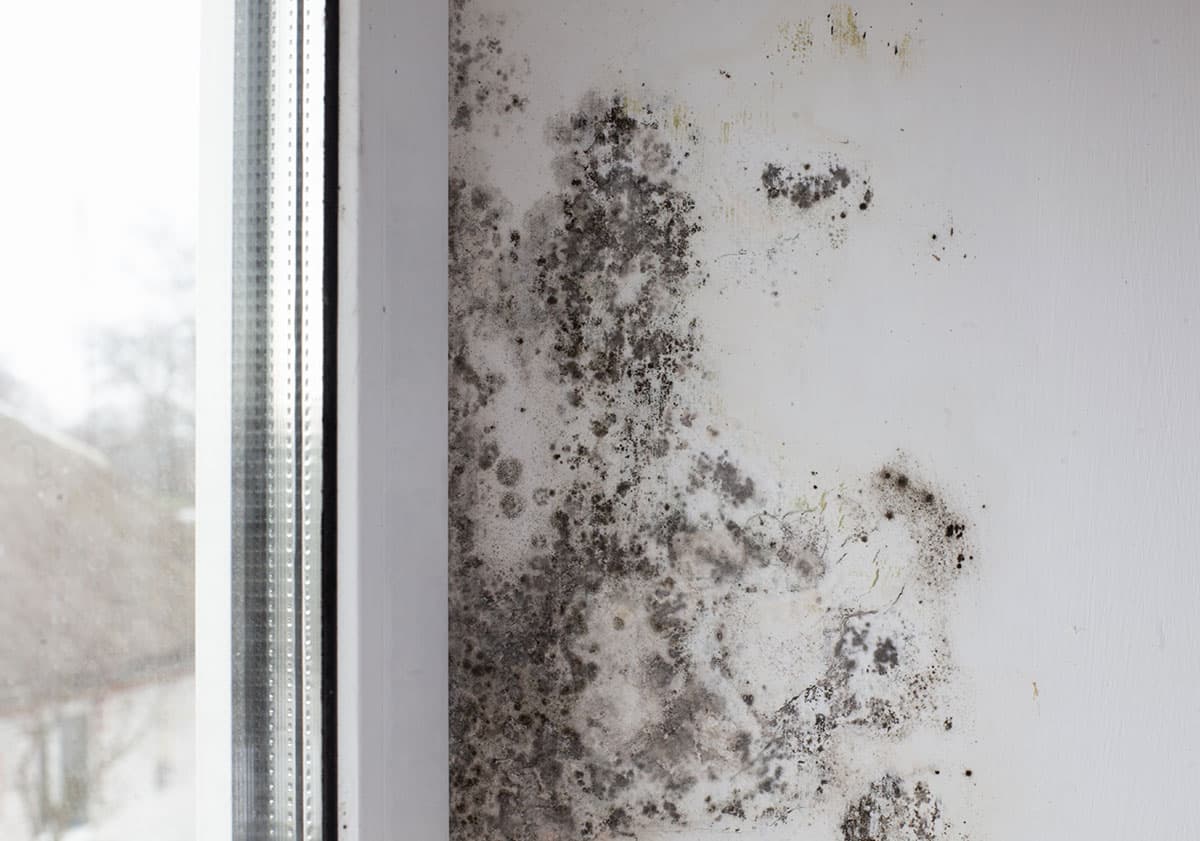
Look for Spotting
Water damage can usually be identified in businesses by dark spots on walls and ceilings, with older damage likely showing rings around the stain. Multiple rings with varying shades may indicate an intermittent problem, where the area has been repeatedly soaked and dried.

Know Your Property Like the Back of Your Hand
As the owner of commercial property, it's important to stay aware of your building's pipe system. Being knowledgeable about what's old and new, and identifying areas at risk for water damage is key. Areas with a higher potential for leaks, especially during rainstorms, should be monitored closely.
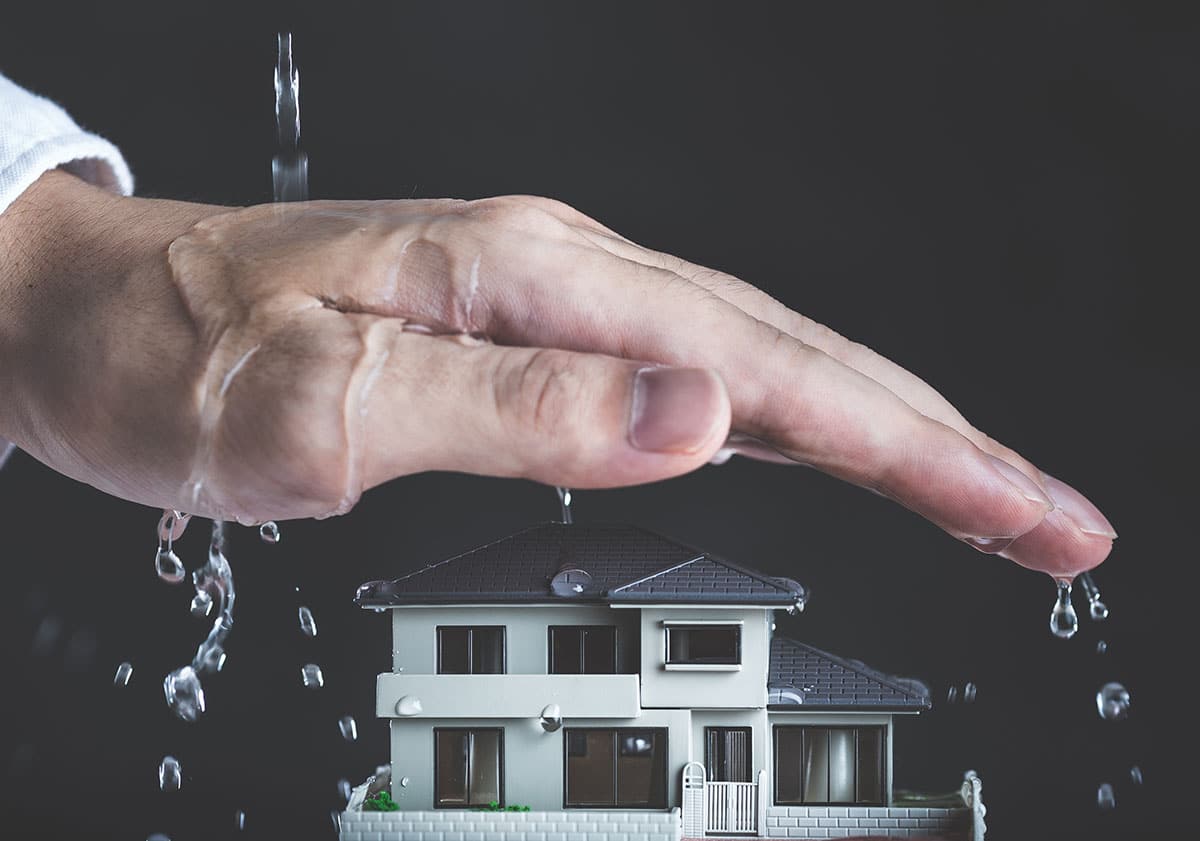
Rusty Appliances
When a commercial property owner observes rust on equipment or AC units of a building, it is highly probable that water damage is the root cause. This could be an indication of an unaddressed old leak in the vicinity. It is crucial for property owners to seek assistance from a specialist to assess the extent of the damage.
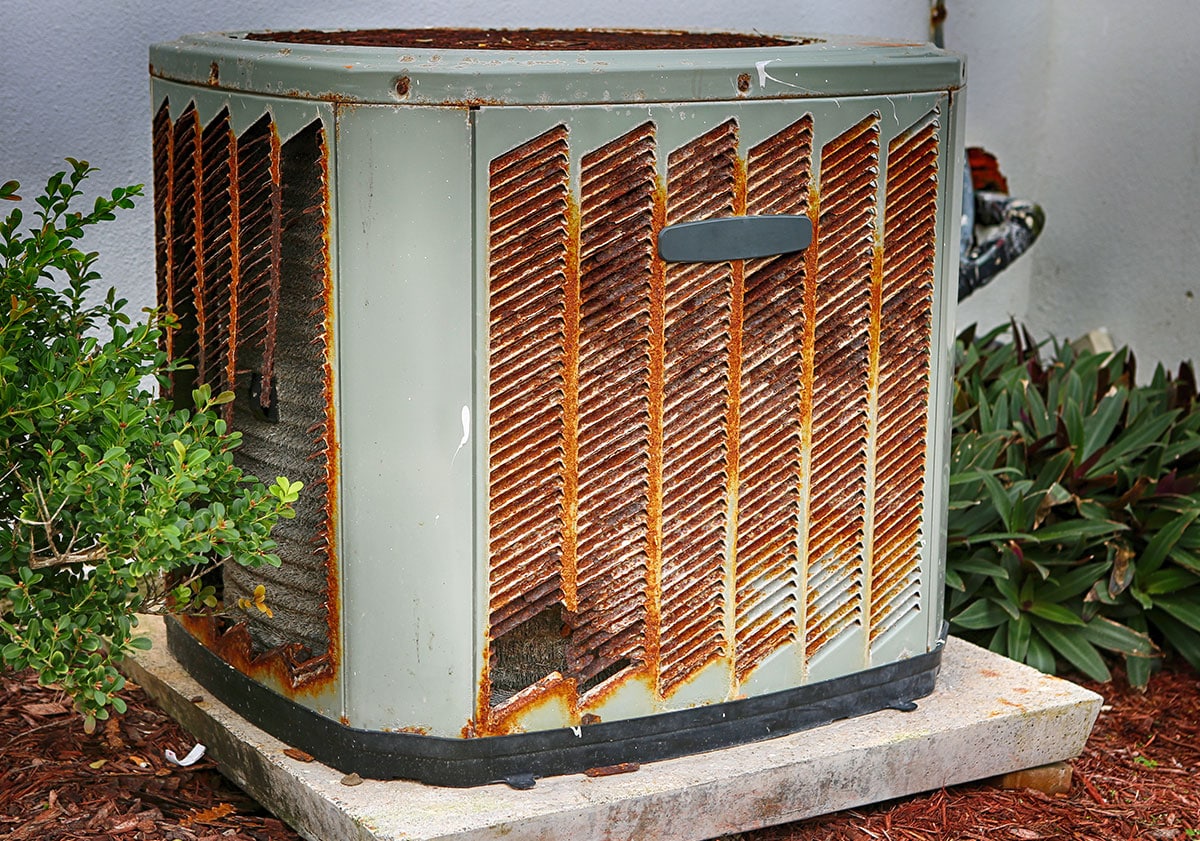
It's important to thoroughly inspect the piping both inside and outside the building. Pay close attention to any signs of oxidation or corrosion around pipe fixtures, and don't forget to check your water heater for rust as well. If you do notice corrosion or rust, it could be an indication of a water leak that needs to be addressed promptly.
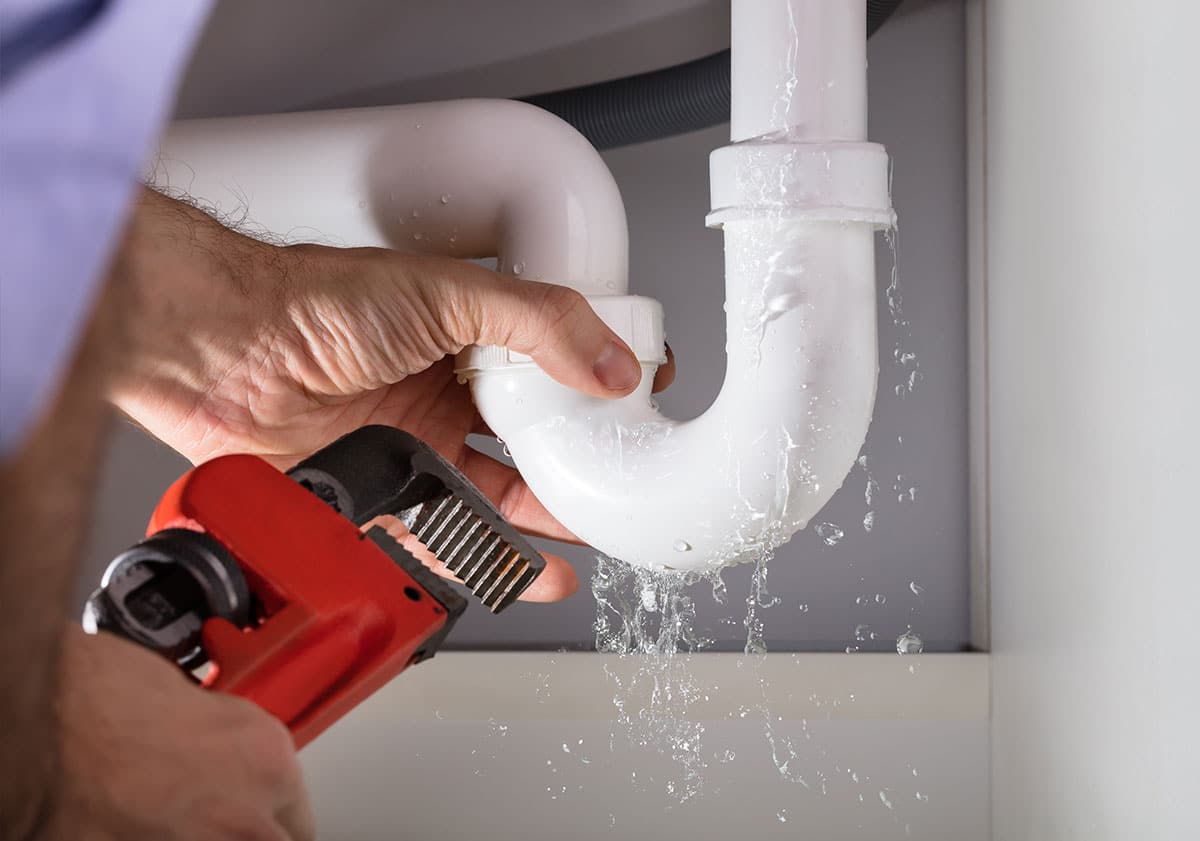
Mold can begin to grow less than 24 hours after water has compromised your business. If you see any signs of mold growth where there have been leaks, contact Coastal Property Restoration ASAP to diagnose the problem.
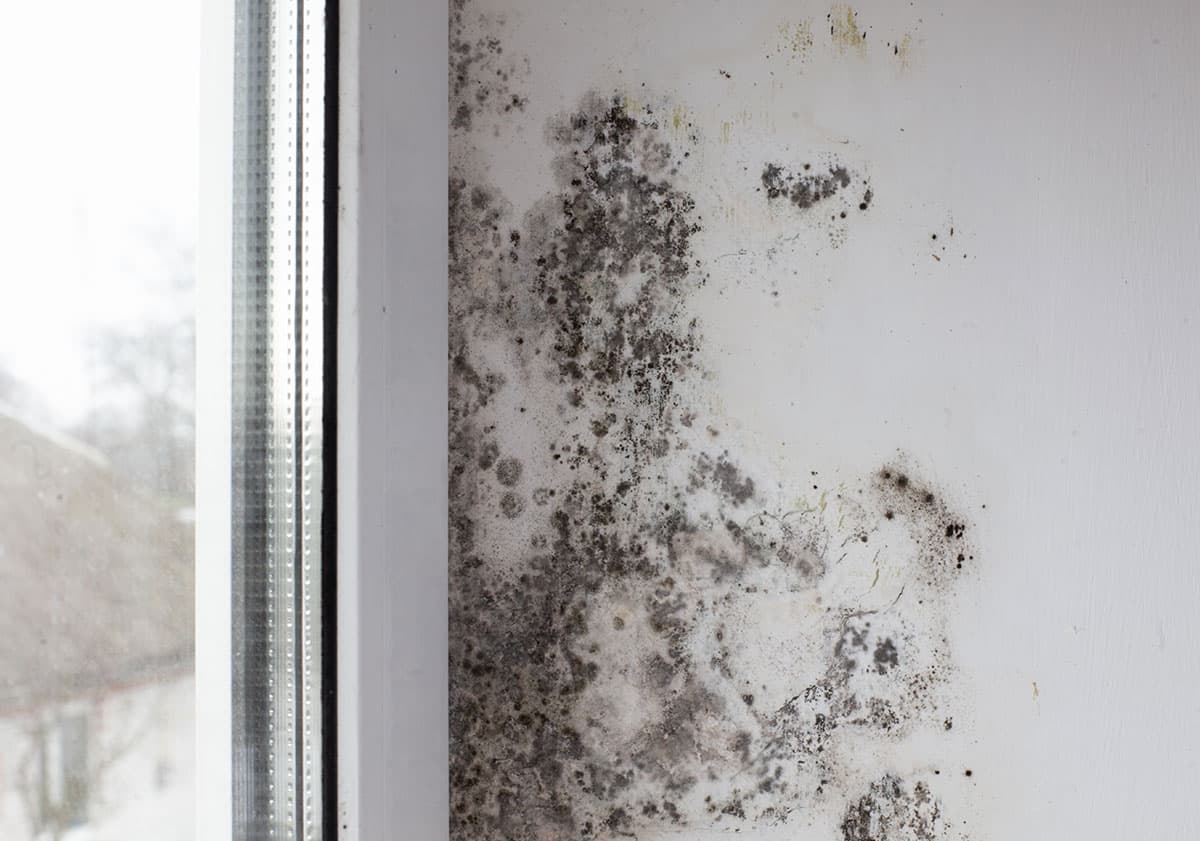
Water damage can usually be identified in businesses by dark spots on walls and ceilings, with older damage likely showing rings around the stain. Multiple rings with varying shades may indicate an intermittent problem, where the area has been repeatedly soaked and dried.

As the owner of commercial property, it's important to stay aware of your building's pipe system. Being knowledgeable about what's old and new, and identifying areas at risk for water damage is key. Areas with a higher potential for leaks, especially during rainstorms, should be monitored closely.
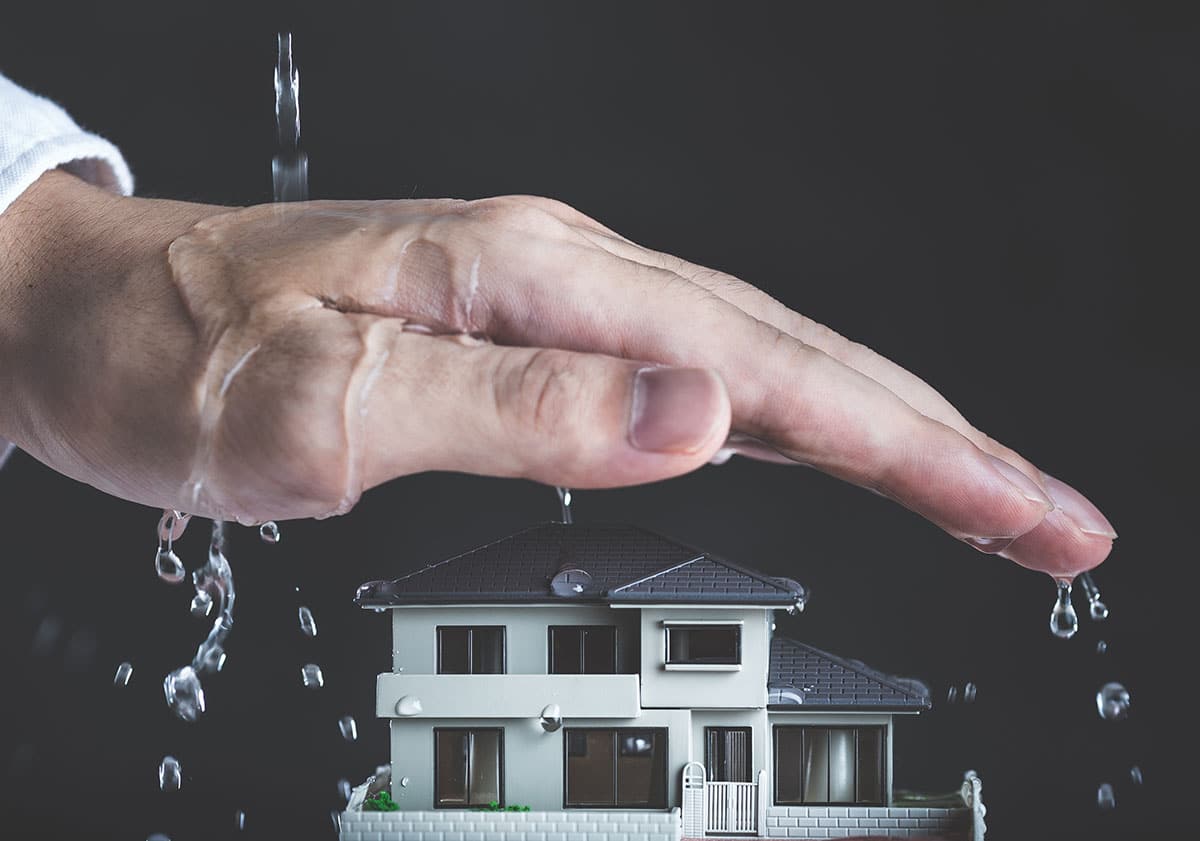
When a commercial property owner observes rust on equipment or AC units of a building, it is highly probable that water damage is the root cause. This could be an indication of an unaddressed old leak in the vicinity. It is crucial for property owners to seek assistance from a specialist to assess the extent of the damage.

Coastal Property Restoration is Your Local Choice For Water Damage Restoration in Isle of Palms, SC
Effective water damage clean-up is an essential process that requires a high level of expertise to ensure your property sustains minimal damage. Selecting the best water remediation company is equally important, especially when it comes to the health of your family or your customers. Whether your kitchen is full of standing water because your dishwasher overflowed or your business is at risk because of an extensive pipe leak, our team of trained and certified experts is only a phone call away, 24 hours a day.
Contact our office to discover the Coastal Property Restoration difference and what separates our water damage mitigation company from others in South Carolina.
Get A Quote
Latest News in Isle of Palms, SC
Isle of Palms noise ordinance up for discussion after questions from businesses
Meredith Blairhttps://www.live5news.com/2024/02/16/isle-palms-noise-ordinance-up-discussion-after-questions-businesses/
ISLE OF PALMS, S.C. (WCSC) - Big changes could be coming to the noise ordinance on Isle of Palms as city leaders hope to make the rules more clear.The city’s noise ordinance currently doesn’t list specific limits. A proposal would establish set decibel levels based on the time and day of the week as well as the area:Isle of Palms business owners got the chance to see the numbers and ask questions on Friday.“We want them to understand that they have a voice, we want to hear from them,” Police Chief...
ISLE OF PALMS, S.C. (WCSC) - Big changes could be coming to the noise ordinance on Isle of Palms as city leaders hope to make the rules more clear.
The city’s noise ordinance currently doesn’t list specific limits. A proposal would establish set decibel levels based on the time and day of the week as well as the area:
Isle of Palms business owners got the chance to see the numbers and ask questions on Friday.
“We want them to understand that they have a voice, we want to hear from them,” Police Chief Kevin Cornett said. “Anything that is going to impact businesses we want them to be able to come to us and say what they think about it.”
One area resident, who only identified himself as Paul, says the noise ordinance needs to have a balance.
“Obviously, late at night you don’t want people making a lot of noise walking up and down the streets while residents are trying to go to bed, but at the same time this is a vacation spot, so you have to have a little bit on leeway for people to enjoy themselves but also be respectful,” he said.
Cornett says they’re working to find a solution that will work for businesses and residents and increase livability for everyone.
Cornette says noise is a hot topic on the island and he values feedback on this from both residents and business owners.
“Everybody is very much invested in this conversation,” Cornett said. “The city council is taking it very seriously and they are going around and talking to people to get their input. So, I think they are doing a great job on making sure voices are heard so that when we get the final project it’s fair and something that will work for everybody.”
Officers use a calibrated decibel reader when called out to a noise complaint.
“That’s how we determine if it’s a violation and then we would take other factors into account like background noise to keep the realistic approach to is as well,” Cornett said.
The public safety committee has to create a final draft before it will head to the city council for two separate readings.
Copyright 2024 WCSC. All rights reserved.
Fees at new waterfront park on Isle of Palms are being questioned by non-residents
Sophia Radebaughhttps://www.counton2.com/news/local-news/fees-at-new-waterfront-park-on-isle-of-palms-are-being-questioned-by-non-residents/
Editor’s note: This story has been updated to include additional information from the city, including the fact that IOP city does not set prices for the new park area.—ISLE OF PALMS, S.C. (WCBD) – Construction is underway on a new Isle of Palms waterfront space that will include a pier and other amenities.Chaundra Yudchenko, who serves as the city’s public relations and tourism coordinator, said the Isle of Palms Public Dock Renovation Project will include a new 16-foot-wide pier with swings and b...
Editor’s note: This story has been updated to include additional information from the city, including the fact that IOP city does not set prices for the new park area.
—
ISLE OF PALMS, S.C. (WCBD) – Construction is underway on a new Isle of Palms waterfront space that will include a pier and other amenities.
Chaundra Yudchenko, who serves as the city’s public relations and tourism coordinator, said the Isle of Palms Public Dock Renovation Project will include a new 16-foot-wide pier with swings and benches.
The project also includes a floating dock with American Disabilities Act (ADA) compliant kayak and stand-up paddleboard launching.
Yudchenko said the public dock is not intended to be used for boat mooring; it will be available to the public for recreational use and passive water activities.
Construction of the public dock is set to begin in March with completion in May.
It’s all part of a 2020 vote by Isle of Palms City Council to improve the island’s marina area.
And while some are excited to have a new area to spend time with their family, others are concerned about potential costs.
“It’ll be nice to have something to bring the grandchildren over to and stuff like that- so, it’ll be nice,” said part-time resident, Dale Johns.
The project is an investment city council member Blair Hahn said was expensive but well worth it.
“The city has gone to great expense to redo the dock and we’re going to have a little green space,” Hahn said.
However, a visit to the park could cost more for non-residents. The plan is to charge visitors for parking and to launch a boat from the public dock. The cost to park is $3.50 per foot of the trailer plus a utility fee per day.
The private marina operators set fees for the new park area – they are not set by the city.
One non-resident who wanted to stay anonymous said many people are upset about this part of the plan. “The city is granting its residents special parking privileges and charging nonresidents exorbitant fees, all while calling this a “public dock.”
Hahn says fees for accessing public parks are nothing new in Charleston.
“It’s no different than Charleston County Park. They charge $20 a car to park on the island so unfortunately, that’s just a reality,” Hahn said.
The nonresident went on to say not everyone will be able to pay the fees.
“The city of Isle of Palms needs to treat residents and nonresidents the same at its “Public park” and charge everyone a fair amount, or allow free parking for everyone,” they said.
The city, according to Yudchenko, has not discussed implementing any feeds for the use of the public dock.
“Marina docks, boat launch fees, and The Outpost marina store are managed by Coastal Marinas, which is a tenant of the city. Fees for boat launching, dockage, and storage are determined by the marina tenant,” said Yudchenko.
Despite the concern, Hahn believes the park will still serve as a popular meeting spot for locals and visitors.
“We are doing everything we can to be resident-friendly and visitor-friendly and to bring people to Isle of Palms, but there’s always a cost to everything you do,” Hahn said.
Additionally, Yudchenko said the city is working with the marina restaurant, Islander 71, on a new parking layout to “increase the number and efficiency of parking spaces available to residents, visitors, and restaurant customers.”
The project is expected to be completed by May of this year.
Whose beach is it? Isle of Palms homeowner, state at odds over unauthorized 'sea wall'
Anna Sharpe asharpe@postandcourier.comhttps://www.postandcourier.com/news/illegal-seawall-isle-of-palms-iop-dhec-rom-reddy/article_f7ec7734-c6b3-11ee-a134-8b6c56b6ff22.html
ISLE OF PALMS — Record tides from an unexpected nor'easter in December ripped away several feet of sand on this barrier island, exposing an unauthorized, clandestine wall in front of a beachfront home near Breach Inlet.The wall's unveiling also spawned a power struggle between the state Department of Health and Environmental Control and the Ocean Boulevard homeowner, with the two at odds over property rights and protecting the diminishing shoreline....
ISLE OF PALMS — Record tides from an unexpected nor'easter in December ripped away several feet of sand on this barrier island, exposing an unauthorized, clandestine wall in front of a beachfront home near Breach Inlet.
The wall's unveiling also spawned a power struggle between the state Department of Health and Environmental Control and the Ocean Boulevard homeowner, with the two at odds over property rights and protecting the diminishing shoreline.
SC Climate and Environment News
This is all playing out on a sandy beach where waves are clawing closer to multi-million dollar homes amid heavy erosion caused by storms and high tides.
The home at the center of the dispute belongs to Rom Reddy, owner of the multimedia local news outlet MyLo News. After taking a beating from Hurricane Idalia last year, Reddy said he installed the wall as a erosion control barrier and covered it with 30 feet of sand.
The December nor'easter washed away the sand, uncovering the bulwark.
While performing post-storm damage assessments, DHEC became aware of the structure.
Some call it a sea wall, which the state defines as a retaining wall designed to withstand wave forces. Reddy maintains his wall isn't a sea wall, as it was never meant to be exposed to the ocean. It was meant to be buried beneath the sand to protect his home's foundation and yard, he said.
"This keeps my yard stable and keeps it from moving around, which is what a retaining wall does. If we have a catastrophic event, it gives my property some protection, although a very nominal level, because it's not meant to be ocean facing," Reddy said.
Reddy said the nor'easter left the wall tilting and unstable, prompting him to have it rebuilt. In response, DHEC sent a cease-and-desist letter in January to halt the construction.
Cease he did not. Construction on the wall continues to move full steam ahead and shows no sign of slowing down.
Reddy said it is his right as a property owner to protect his home. The area landward of the setback line is his to do with as he pleases, he said, citing South Carolina's Coastal Tidelands and Wetlands Act.
Not so, according to DHEC's division of Ocean and Coastal Resource Management.
The sand in front of Reddy's property is considered a critical area, the agency said, and any alteration of a critical area requires permits from OCRM, even critical areas that are landward of the jurisdictional setback.
DHEC spokesperson Laura Renwick said the agency regularly issues permits for work in these areas, though it is unlikely Reddy's wall would have been approved.
"Since erosion control structures and devices such as the one identified at this property have been banned per state law since 1988, this structure would not have been permitted," Renwick said.
Today's Top Headlines
Isle of Palms officials said they are aware of the structure, which violates a city ordinance prohibiting hard erosion control measures like sea walls, bulkheads and revetments. But in the case of Reddy's unauthorized structure, the city said its hands are tied. Jurisdiction of that area, and much of the island's critical areas, fall under DHEC, said Mayor Phillip Pounds.
"In this particular case, the OCRM has claimed jurisdiction, so that takes the city out of the mix, and it is up to them to enforce the state-level rules. We are relying on the state to enforce their rules that prevent structures like this being built per their cease-and-desist orders," Pounds said.
Judges in two cases in recent years have sided with homeowners who built walls or placed sandbags along eroding sections of the South Carolina coast.
While Reddy is facing pushback from DHEC, some of his neighbors are behind him. Paul Jorgensen, who owns the property adjacent to Reddy, said he doesn't love what is being erected next door, but he understands his neighbor's mindset. Working with the city and the state to get approval for protective measures has left him feeling frustrated.
"The city and the state have been utterly horrible at handling the situation. Not only have they been utterly horrible at managing, they won't even let us help ourselves," Jorgensen said.
Jorgensen said the preventative measures the city does take on aren't enough.
Ongoing restoration and protection efforts on the island include continuing sand scraping and sandbag placements on the island that began under an emergency order following Hurricane Idalia in September. City Council gave the efforts a boost in October, allotting $1.25 million to continue sand scraping along the beaches to rebuild the dunes. Council also budgeted $250,000 for installing sandbags on properties within 20 feet of erosion areas.
"The city and the state are not doing nearly enough, and, in fact, are preventing homeowners from protecting our own property," Jorgensen said.
South Carolina hasn't allowed structures like Reddy is building since enacting the Beachfront Management Act in 1988, citing a "false sense of security" the measures give to beachfront property owners while simultaneously aiding in further erosion.
Structures like sea walls block the ability of a wave to break naturally, pushing its force onto adjacent properties. The energy bounces back off of the wall, pulling the sand and eroding the beach on the seaward side. Emily Cedzo, director of conservation programs and policy for the Coastal Conservation League, said softer measures for preventing erosion, like sand fencing and larger restoration projects, are ideal for protecting beaches.
"Those are really the ideal ways to manage a beach responsibly so that it can provide good protection for private properties, but also public access and wildlife habitat," Cedzo said.
With multiple cease-and-desist directives, DHEC could begin to dole out fines or penalties.
"When DHEC identifies violations of applicable state laws or regulations, the agency has the authority to initiate an enforcement process that may result in the issuing of a civil penalty to the responsible party, among other actions," Renwick said.
Some think it's time for DHEC to take action.
"I think DHEC is going to have to move forward with enforcement. I don't know what their process or timeline looks like, but I think it's clear that they've already tried to communicate with the property owner," Cedzo said. "I know that several residents on the Isle of Palms are really concerned about it and continue sending reports."
Reddy said the cease-and-desist directives from DHEC won't deter him.
"They have to go in front of a judge and prove to the judge that we're, in fact, breaking the law. And we're ready for that," Reddy said.
Reach Anna Sharpe at 843-806-6790.
Isle of Palms city council approves additional funding for erosion control
Sophia Radebaughhttps://www.counton2.com/news/isle-of-palms-city-council-approves-additional-funding-for-erosion-control/
ISLE OF PALMS, S.C. (WCBD)- Erosion on the Isle of Palms continues to be a big concern for IOP city leaders and property owners.Council members, the mayor and coastal engineering experts met Tuesday afternoon to discuss short term solutions.The issue is so urgent that city leaders took action, approving more than a million dollars to fund short-term solutions for the erosion.Beach erosion has long been a problem on the Isle of Palms“There’s a lot of concern,” City councilmember Rusty Streetman sa...
ISLE OF PALMS, S.C. (WCBD)- Erosion on the Isle of Palms continues to be a big concern for IOP city leaders and property owners.
Council members, the mayor and coastal engineering experts met Tuesday afternoon to discuss short term solutions.
The issue is so urgent that city leaders took action, approving more than a million dollars to fund short-term solutions for the erosion.
Beach erosion has long been a problem on the Isle of Palms
“There’s a lot of concern,” City councilmember Rusty Streetman said.
However, the city says it’s starting to get worse.
“Some of our residents down there have hit the critical line of 20 feet, water within 20 feet of their structure,” Mayor Phillip Pounds said.
The city has no control over one of the major causes of the erosion, king tides.
“Tides were supposed to be 6 and a half feet and with the winds and waves, it was about 8 and half, so pretty significant difference than what we were expecting,” Pounds said.
However, what leaders say they can control, is their response to the issue.
Pounds said, “We need some immediate relief and some immediate guidance to our residents down there on what they can and can’t do.”
“Beach erosion will always be here, it’s a fact of life. We live with it so we just have to try and plan as well as we can to handle that,” Streetman said.
The city approved about one and a half million dollars to continue digging sand from the shoreline for dune renourishment.
It’s a project that has been ongoing since tropical storm Idalia hit in August.
They also say they’ll use that money to bring in more sand if needed and provide sandbags for residents who need them.
Streetman said, “We also have a beach renourishment fund that is taxed onto the accommodations tax, that is targeted just for beach renourishment.”
In January, a long-term renourishment project in partnership with the Army Corp of Engineers will begin.
They’re going to rebuild some of the beach in hopes of mitigating erosion for years to come.
Editorial: SC beach belongs to public; stop latest effort to injure it for private gain
THE EDITORIAL STAFFhttps://www.postandcourier.com/opinion/editorials/illegal-isle-of-palms-sea-wall/article_5d46fec2-cb7f-11ee-b7ab-9f3781ed3fe7.html
Not so long ago, it would have been inconceivable for anyone to build a sea wall along South Carolina's coast, bury it in the sand and then set about rebuilding it when a winter storm washed away the sand and exposed it to public view. Unimaginable that the property owner would brazenly continue the construction project even after state regulators told him to stop.After all, for more than three decades, our state law has prohibited property owners from building new sea walls on the beaches of our barrier islands. The ...
Not so long ago, it would have been inconceivable for anyone to build a sea wall along South Carolina's coast, bury it in the sand and then set about rebuilding it when a winter storm washed away the sand and exposed it to public view. Unimaginable that the property owner would brazenly continue the construction project even after state regulators told him to stop.
After all, for more than three decades, our state law has prohibited property owners from building new sea walls on the beaches of our barrier islands. The S.C. Beachfront Management Act even prohibits the use of sandbags except on a temporary basis to protect against approaching hurricanes and similar emergencies.
The law is part of a well-known and well-litigated strategy to protect and preserve our sandy beaches, which belong to the public and fuel our tourism economy. Although sea walls protect the buildings and property immediately behind them, they also speed erosion in front of and alongside them — thus quite literally stealing the beach from all South Carolinians.
But the part-time, political board of the state Department of Health and Environmental Control started dismantling that law two years ago, when it ignored the advice of its expert staff, gave an extraordinarily liberal reading to a loophole and allowed seven property owners on DeBordieu Beach to essentially build a sea wall by burying an illegally constructed wall of sandbags in the sand. Even if the board's reading of the law was correct, it was under no legal obligation to allow the work.
The homeowners’ attorney — state Sen. Steven Goldfinch — said the board wasn’t authorizing a sea wall but simply allowing Coastal Carolina University professor Paul Gayes to conduct an experiment to see what happens when sandbags are buried under more sand.
It’s true that we don’t know precisely how long or how well those sandbags will protect the property behind them, but we know what they will do to the beach in front of them, a beach that belongs to the public and that the DHEC board is supposed to protect. These bags have been transformed from temporary emergency protective devices into a sea wall, which will speed erosion of the beach in front of them and any property beside them that isn’t similarly hardened.
Before that 2022 vote, we warned about the message allowing the so-called experiment would send to every beachfront property owner in South Carolina: Don’t worry about what state law says about protecting your property at the expense of the public beach. Don’t worry about DHEC regulations. Do whatever you think you need to do. We won't simply forgive you for violating the law and the regulations. If you can find a professor to call what you’re doing an “experiment,” we’ll let you do even more harm to our beaches.
This is where we are once again forced to remind state officials that we told them so.
And it turns out we underestimated how brazen some beachfront property owners can be.
As The Post and Courier’s Anna Sharpe reports, Isle of Palms property owner Rom Reddy installed an unauthorized wall in front of his house last year after Hurricane Idalia and covered it with 30 feet of sand. When the December nor'easter washed away the sand, he set about rebuilding it. And when DHEC became aware of the structure, it appropriately issued a cease-and-desist order.
Mr. Reddy claims it’s not a sea wall because he never meant the structure itself to be exposed to the ocean — an explanation that makes the DeBordieu Beach property owners look like paragons of lawfulness. He also claims he has a right to protect his property, which displays a stunning misunderstanding of state law — and of who owns South Carolina’s beaches.
Disclaimer:

